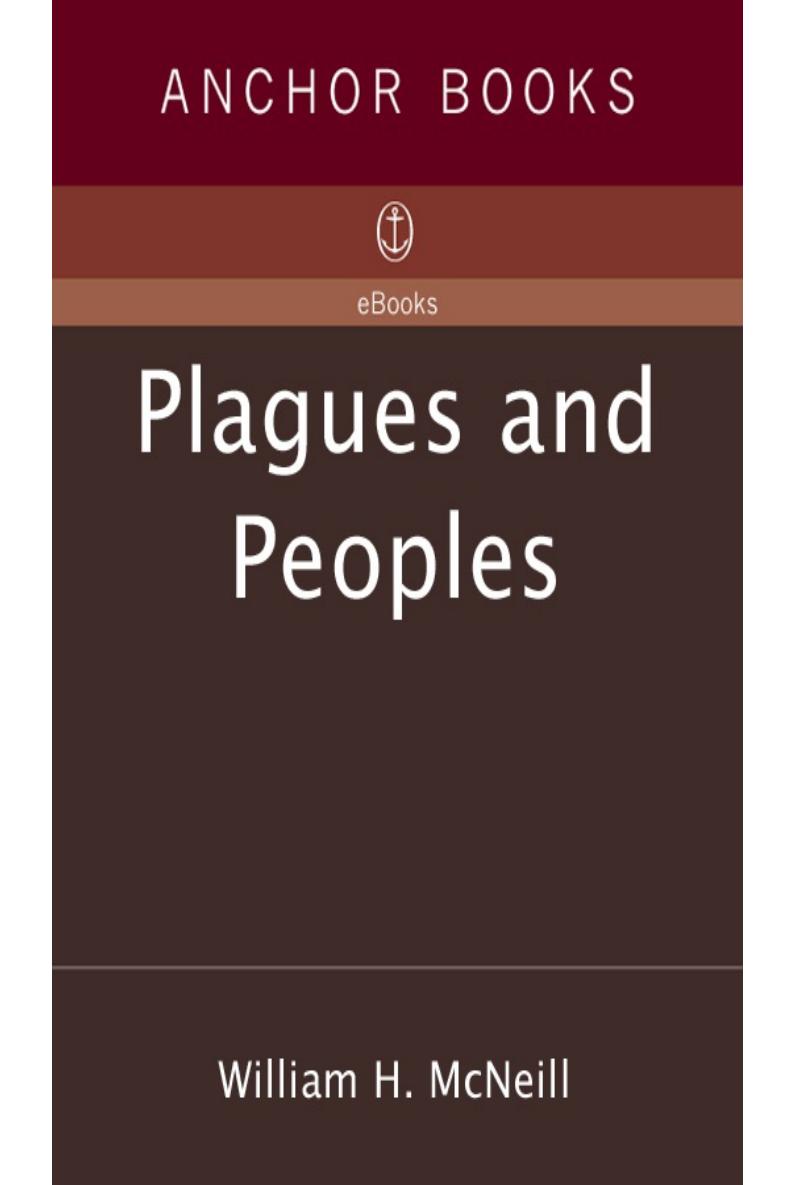Plagues and Peoples by William H. McNeill

Author:William H. McNeill [McNeill, William H.]
Language: eng
Format: epub, mobi, pdf
Tags: History, Non-Fiction, European History, v.5, Science, Health, Classics, 20th Century, Social History, plague, disease, Medieval History, Medical History, Cultural History, Biological History
ISBN: 9780385121224
Google: VzRin_YlpCAC
Amazon: 0385121229
Barnesnoble: 0385121229
Goodreads: 46725
Publisher: Anchor
Published: 1976-01-01T00:00:00+00:00
When we turn attention from Europe and ask what the new plague pattern may have meant elsewhere in the Old World, a troublesome void presents itself. Scholarly discussion of the Black Death in Europe, its course and consequences, is more than a century old; nothing remotely comparable exists for other regions of the earth. Yet it is impossible to believe that the plague did not affect China, India, and the Middle East; and it is even more implausible to think that human life on the steppe was not also brought under new and unexampled stress by the establishment of a persistent reservoir of bubonic infection among the rodents of the Eurasian grasslands all the way from Manchuria to the Ukraine.
To be sure, there is ample evidence that plague became and remained, as in Europe, a dreaded recurrent affliction throughout the Islamic world. Egypt and Syria shared the plague experience of other parts of the Mediterranean coastlands with which they remained always in close contact. About a third of Egypt’s population seems to have died in the first attack, 1347–49, and the plague returned to the Nile Valley at frequent intervals thereafter, appearing there most recently in the 1940s.67
This is not surprising, for Egypt developed special ties with the steppelands of eastern Europe. From 1382 until 1798 the Nile Valley was governed by a corporation of warriors, the so-called Mamelukes, who were recruited from the Caucasus region. They maintained constant communication with Black Sea ports, for only so could suitable reinforcement to their numbers be assured.
The disease consequences for Egypt were probably severe. A simple count of epidemic disasters mentioned by Arabic writers shows a sudden and dramatic upsurge in the frequency with which Egypt suffered from pestilence in the fifteenth century as compared to other parts of the Mediterranean and Moslem worlds.68 Depopulation and impoverishment were a result, enhanced no doubt by Mameluke oppression and misgovernment. But since disease has always been a more efficient killer than human muscles, the decay of Egyptian wealth and numbers was probably due more to the microparasitic risks inherent in Egypt’s special link with the western steppelands than to anything the Mamelukes did deliberately. Certainly, as long as their rule endured, Egypt maintained a sinister reputation among Europeans, who could often trace a new outbreak of plague affecting the rest of the Mediterranean either to Alexandria or Cairo. Although Egypt’s ill repute among Christians was undoubtedly enhanced by religious xenophobia, it remains true that after Napoleon overthrew Mameluke rule in 1798, thus severing Egypt’s long-standing tie with the coastlands of the Black Sea, outbreaks of plague diminished and even disappeared for a number of decades after 1844.69
In other parts of the Islamic world, major bouts of bubonic plague often lasted for several years, shifting from town to town or region to region with the seasons, but persisting as an unbroken chain of infection until susceptible human hosts ran out and the pestilence disappeared for a while. As in Europe, such visitations of plague tended to affect any given region at irregular intervals of twenty to fifty years, i.
Download
Plagues and Peoples by William H. McNeill.mobi
Plagues and Peoples by William H. McNeill.pdf
This site does not store any files on its server. We only index and link to content provided by other sites. Please contact the content providers to delete copyright contents if any and email us, we'll remove relevant links or contents immediately.
When Breath Becomes Air by Paul Kalanithi(7280)
Why We Sleep: Unlocking the Power of Sleep and Dreams by Matthew Walker(5668)
Paper Towns by Green John(4180)
The Immortal Life of Henrietta Lacks by Rebecca Skloot(3838)
The Sports Rules Book by Human Kinetics(3602)
Dynamic Alignment Through Imagery by Eric Franklin(3505)
ACSM's Complete Guide to Fitness & Health by ACSM(3476)
Kaplan MCAT Organic Chemistry Review: Created for MCAT 2015 (Kaplan Test Prep) by Kaplan(3431)
Introduction to Kinesiology by Shirl J. Hoffman(3308)
Livewired by David Eagleman(3140)
The River of Consciousness by Oliver Sacks(3002)
Alchemy and Alchemists by C. J. S. Thompson(2919)
The Death of the Heart by Elizabeth Bowen(2916)
Descartes' Error by Antonio Damasio(2750)
Bad Pharma by Ben Goldacre(2738)
The Gene: An Intimate History by Siddhartha Mukherjee(2502)
Kaplan MCAT Behavioral Sciences Review: Created for MCAT 2015 (Kaplan Test Prep) by Kaplan(2495)
The Fate of Rome: Climate, Disease, and the End of an Empire (The Princeton History of the Ancient World) by Kyle Harper(2446)
The Emperor of All Maladies: A Biography of Cancer by Siddhartha Mukherjee(2441)
